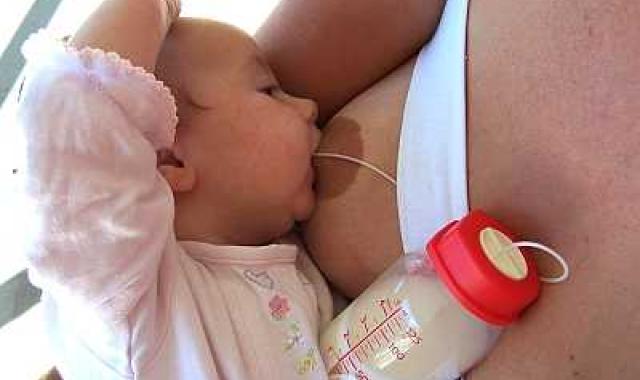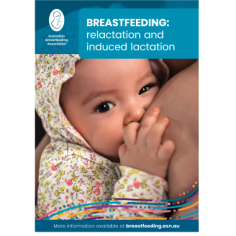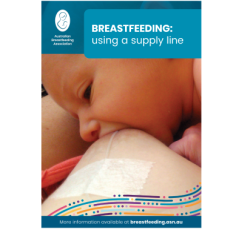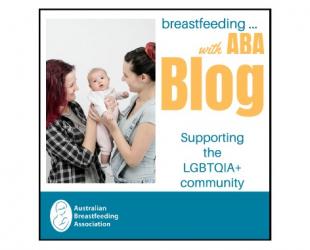Once your milk supply starts coming in,
you can feed your baby at the breast.

Relactation or induced lactation is the process of bringing in a milk supply. Is usually involves a lot of expressing, especially if you have never breastfed before.
Once your breasts have started to produce a small amount of milk, you can try putting your baby to your breast to see if they are happy to suck.
You may like to read up on positioning and attachment, so you are familiar with how to help your baby get on correctly.
If your baby suckles at all it is a good sign, but if they won’t, it doesn't mean that you should give up the idea.
There are many other things you can try to help your baby to feed at the breast. It is important not to force the baby on the breast, however it is alright to keep trying things.
If (and when) your baby will suck at your breast
-
Keep baby close to you. Carrying your baby in a baby carrier helps them to breastfeed often while you go about your normal day.
-
Feed your baby as often as you can. The more often your baby suckles at your breast, the more milk your breasts will make.
-
Trigger your let-down reflex (if you already have some milk) before offering your baby the breast.
-
Sleeping close to your baby makes it easier to feed at night. Night feeds are very helpful for building a milk supply.
-
Avoid anything that makes your baby suck less, such as a dummy. Instead, offer the breast as a way to help settle them.
Help your baby to stay at your breast
-
Spend lots of time skin-to-skin with your baby. Skin-to-skin contact helps release hormones which, in turn, help your body to make milk.
-
Offer the breast when your baby is relaxed and happy or sleepy.
-
Make bottle feeds more like breastfeeding by holding your baby close, using paced bottle feeding techniques and using a slow flow bottle teat.
-
A supply line can help to keep your baby sucking, as it gives them extra milk while they breastfeed .
-
Putting a bottle teat filled with milk over your nipple may help get your baby used to taking milk in this way. A nipple shield can also help as a step between bottle and breast.
Using a supply line
While you build your milk supply, you may wish to use a supply line. This is a device to provide extra milk to your baby while they breastfeed. At the same time your baby stimulates your breast and removes what milk you have made.
It consists of a container which holds the milk and fine tubing that carries the milk from the container to your nipple. When your baby suckles at the breast, milk is drawn through the tubing to their mouth.
A supply line is particularly useful if you are bringing in a milk supply because your baby is encouraged to stay at the breast – milk is always there. The more your baby sucks at your breast, the more milk you will make.

Drugs and alternative therapies for increasing milk supply
Some people find that drugs and other therapies can be helpful. These 'extras' will only work if milk is being removed, either by the baby or expressing.
Will it work for me?
As you think about relactating or inducing lactation, keep in mind that everyone is different. No two mums, children or situations are the same. The road to breastfeeding is different for everyone. You will approach this in your own way with the resources you have and what suits you.
It is important to keep in mind that breastfeeding is not just about the milk. It’s also about the close contact and bond between a mum and her baby, which is important for a baby's mental, emotional and social development.
Some mums never build up their milk supply to a point where they can stop using extra milk. They choose to continue mixed feeding because they value the emotional bond they develop through breastfeeding. Other mums make lots of milk but their babies won't suck at the breast. Some describe this milk as ‘liquid love’.
Whether you succeed or whether you decide not to pursue breastfeeding right now, you are very welcome to connect with your local ABA group for support. For further support or information contact an ABA counsellor.
© Australian Breastfeeding Association April 2022
Read more about relactation and induced lactation
Evidence-led info and practical tips from our Special Situation Information Series
Breastfeeding: relactation and induced lactation

Practical tips for feeding your baby while you make milk
Breastfeeding: using a supply line




